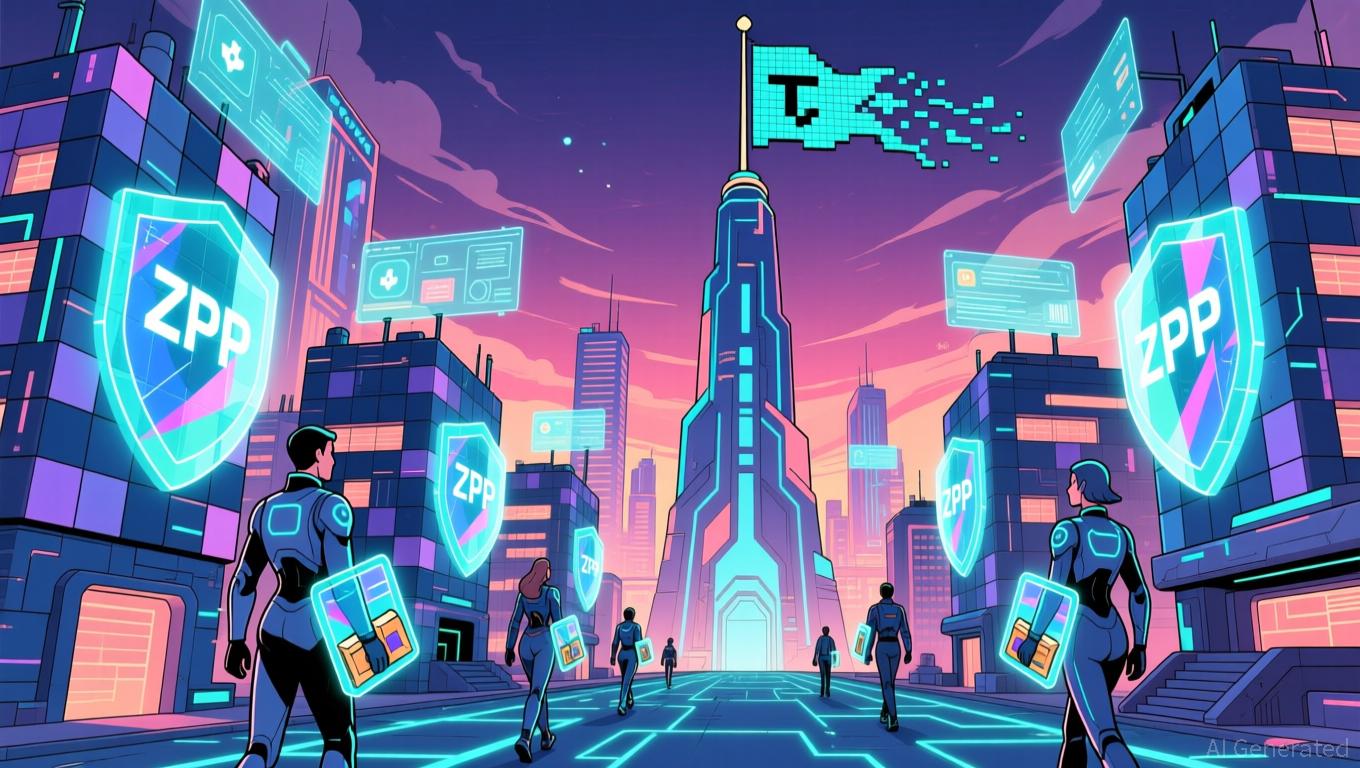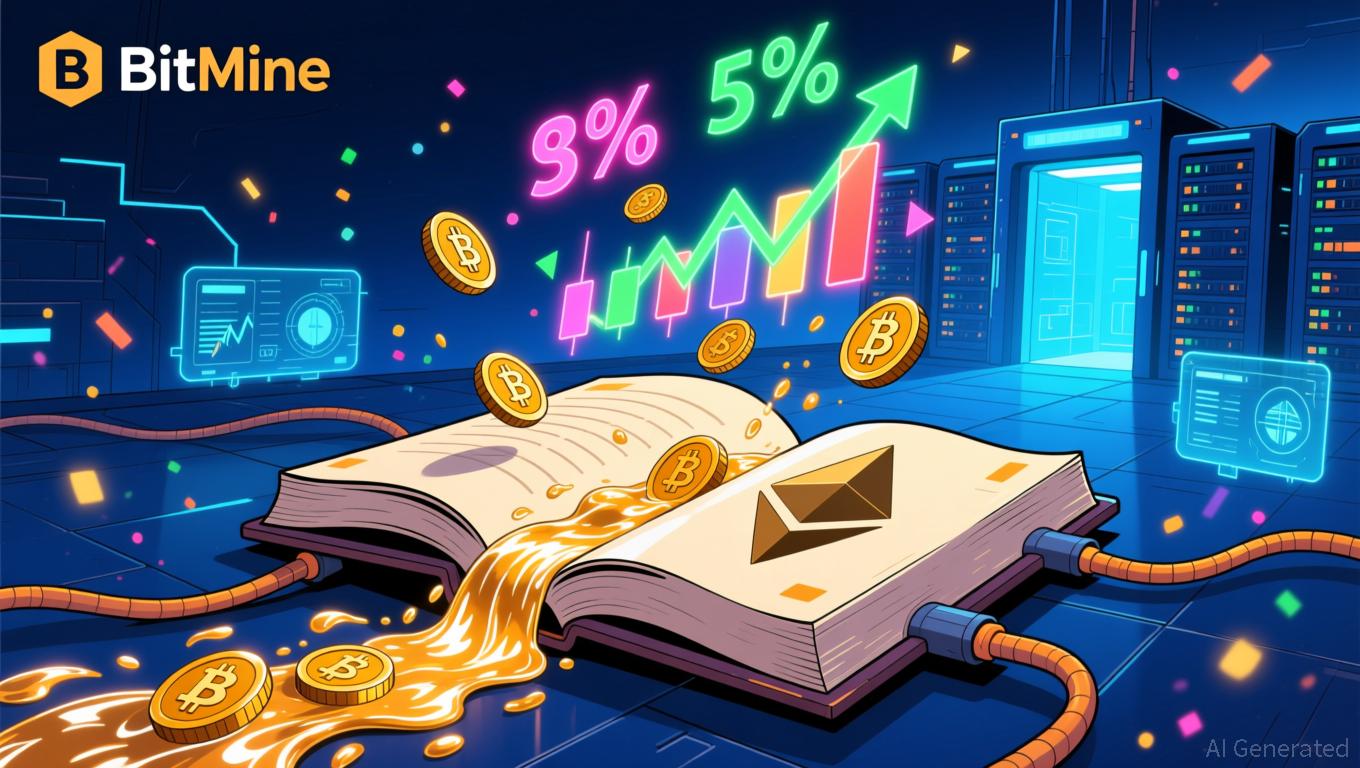ICP Value Jumps 30% Following Significant Network Update: Enhanced On-Chain Governance and Layer 1 Expansion Drive DeFi Advancement
- ICP's token price surged 30% in 2025 due to transformative upgrades in on-chain governance and Layer 1 scalability. - Fission and Knot upgrades enabled 1,200+ TPS with reverse gas model, outperforming Ethereum's scalability limitations. - Active Liquid Democracy governance and Neuron Fund attracted 2,155+ developers, boosting TVL by 22.5% in one day. - Price gains correlate with DeFi adoption, institutional staking, and cross-chain integrations via Chain Fusion technology.
On-Chain Governance: Ushering in a New Age of Decentralized Control
ICP’s achievements are rooted in its Active Liquid Democracy governance framework, which underwent significant refinement in 2025. This approach lets token holders assign their voting rights to trusted parties or individuals, yet they can reclaim those rights whenever they choose. The rollout of the Periodic Confirmation of Following feature in early 2025 further improved this system by requiring neuron holders to actively reaffirm their governance preferences every six months.
These governance enhancements have led to a notable increase in both institutional and developer engagement.
Layer 1 Scalability: Fission and Knot Usher in a New Standard
While governance lays the foundation, ICP’s Fission and Knot upgrades are at the core of its scalability transformation. Fission, which is currently being implemented, enhances load distribution and computing power, allowing the network to process thousands of transactions per second with almost immediate finality. This stands in sharp contrast to Ethereum’s costly and slow transaction model, which often deters users.
The Knot project, set for release in October 2025, brings in Generation 3 node hardware and improved incentive structures. By further decentralizing the network’s infrastructure, Knot enables scaling without sacrificing security or decentralization.
The impact is remarkable: ICP now boasts over 1.2 million active wallets, with developers utilizing the reverse gas model—where computational costs are prepaid—to deliver affordable solutions for businesses and metaverse projects.
The Price Rally: Innovation as the Driving Force
The recent 30% rise in ICP’s price is far from random.
Importantly, these price trends coincide with the rollout of Fission and Knot. The TVL boost driven by Caffeine AI and the Neuron Fund’s institutional traction have created a positive feedback loop: improved governance draws in developers, better scalability attracts users, and both factors increase token demand. The outcome? A self-sustaining cycle that has lifted ICP’s market capitalization to $2.13 billion, with daily trading volume reaching $449.92 million.
Looking Forward: What This Means for Investors
For those considering investment, the takeaway is straightforward: ICP is more than just a speculative play—it’s a foundational platform for the upcoming era of DeFi. Its governance structure keeps the network adaptable, while its Layer 1 improvements lay the groundwork for widespread adoption. The recent price momentum reflects these strengths,
Nevertheless, some risks persist.
Conclusion
The Internet Computer Protocol’s 30% price increase highlights the impact of targeted innovation. By reinventing both on-chain governance and Layer 1 scalability, ICP has built a platform that not only rivals Ethereum but surpasses it in several key aspects. For investors seeking to participate in the next evolution of DeFi, ICP stands out as a strong contender: a network where governance is participatory, scalability is boundless, and growth is clearly demonstrated.
Disclaimer: The content of this article solely reflects the author's opinion and does not represent the platform in any capacity. This article is not intended to serve as a reference for making investment decisions.
You may also like
Ethereum News Today: Ethereum's Recent Overselling: Is a Recovery Imminent or Will the Decline Continue?
- Ethereum faces mounting bearish pressure amid crypto market selloff, with technical indicators and extreme fear metrics signaling a stretched downtrend. - Market capitalization dropped 8% in 24 hours, Bitcoin dominance rose to 56%, while ETH trades below key EMAs with an oversold RSI of 27. - Binance confirms "Strong Sell" signals for ETH/USD, with 12 bearish moving averages and a 14-day RSI of 30.48 reinforcing the negative bias. - DeFi liquidity crisis ($12B idle assets) and a Fear & Greed Index at 14

Blockchain’s Evolving Foundations: Institutional Embrace Fueled by Governance and Privacy
- Tezos (XTZ) shows steady recovery via governance-driven upgrades, regaining $0.60 support amid growing institutional altcoin interest. - Zero Knowledge Proof (ZKP) gains traction with privacy-focused tech, $100M engineering investment, and transparent ICA token distribution. - Both projects highlight blockchain 3.0 priorities: Tezos emphasizes forkless governance adaptability, ZKP advances verifiable privacy infrastructure. - Analysts project XTZ reaching $1.20 by 2026 through RWA partnerships, while ZKP

Beehiiv: The Platform Powering the Professional Creator Ecosystem
- Beehiiv CEO Tyler Denk positions the platform as an "operating system" for professional creators, integrating email, analytics, and multi-format content delivery. - The strategy addresses industry trends toward community engagement and diversified revenue, aligning with McKinsey/Nieman Lab insights on scaling beyond hobbyist models. - By reducing take rates and prioritizing operational efficiency, Beehiiv challenges niche platforms while competing with Substack in the professionalization-driven creator e

Ethereum Updates Today: BitMine's ETH Acquisition: A 'Hotel California' Bet Despite $4.18B in Losses
- BitMine buys $60M in Ethereum despite $4.18B unrealized losses, expanding its 3% ETH treasury amid market volatility. - Company launches MAVAN staking network and declares $0.01/share dividend, aiming to create recurring revenue from ETH staking. - Stock drops 52% vs. ETH's 28% decline as analysts warn DAT models face liquidity risks and "Hotel California" exit challenges. - CEO Tom Lee remains bullish on ETH's long-term recovery, citing historical V-shaped rebounds post-liquidity shocks like FTX collaps
